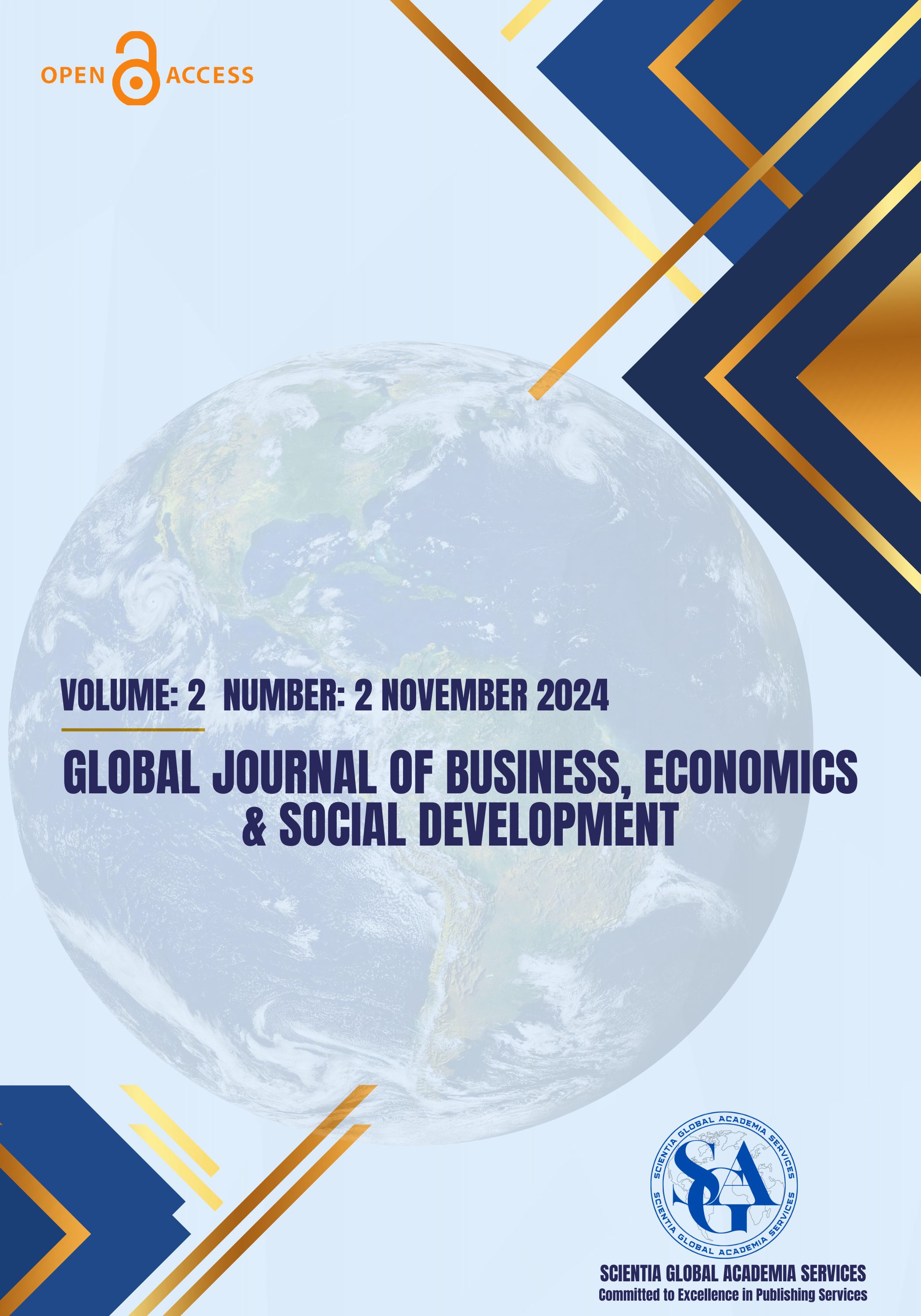Investigating the Interplay of Socioeconomic Inequalities and Unemployment on Indonesia’s Economy
Main Article Content
Abstract
This study explores the impact of income inequality, human development, gender empowerment, and open unemployment on economic growth across Indonesia’s 34 provinces over the period 2015 to 2022. Employing panel data regression techniques, the study utilizes both cross-sectional and time-series data to analyze regional variations and trends. The Random Effects Model was identified as the most appropriate model for this analysis based on statistical tests and model selection criteria. The findings indicate that income inequality and open unemployment have a statistically significant negative effect on economic growth. In contrast, improvements in human development and gender empowerment are shown to positively and significantly influence economic performance. These results highlight the importance of addressing structural disparities and enhancing social development indicators to achieve more inclusive and sustainable economic outcomes. The study suggests that equitable income distribution and strategic government investments in infrastructure, education, and healthcare can improve the quality of human capital, thereby supporting long-term growth. Furthermore, gender empowerment through policies promoting equal access to opportunities and decision-making roles can serve as a catalyst for broader economic participation and productivity. To address the adverse effects of unemployment, the government should focus on creating diverse employment opportunities and fostering entrepreneurship to enable income generation at the community level. Overall, the study underscores the need for a multidimensional policy approach that integrates economic, social, and gender considerations to promote inclusive and sustainable economic growth across Indonesia.
Article Details
Section

This work is licensed under a Creative Commons Attribution 4.0 International License.
How to Cite
References
Dewi, N. L. S., & Sutrisna, I. K. (2014). Pengaruh Komponen Indeks Pembangunan Manusia Terhadap Pertumbuhan Ekonomi Provinsi Bali. E-Jurnal EP Unud, 3(3), 106–114.
Esteve, B., & Volart. (2004). Discrimination Gender and Growth: Theory and Evidence from India. Suntory and Toyota International Centres for Economics and Related Disciplines. www.wider.unu.edu
Galor, O. and Weil, D. N. (1993). The Gender Gap Fertility And Growth. In Nber Working Paper Series (p. 4550).
Harjana, L. I. (2015). Analisis Pengaruh Jumlah Penduduk, Tingkat Pengangguran Terbuka, Dan Belanja Langsung Terhadap Pertumbuhan Ekonomi. Jurnal Ilmiah Mahasiswa FEB, 3(2).
Hobrouw, Y. A., Suaryana, I. G. N. A., & Putri, I. G. A. M. A. D. (2021). The Influence of Local Own Income, Capital Expenditures and Human Development. Jurnal Akuntansi, 31(2), 401–413.
Infarizki, A. Y., Jalunggono, G., Laut, L. T., Ekonomi, F., & Tidar, U. (2020). Analisis Pengaruh Ketimpangan Gender Terhadap Produk Domestik Regional Bruto Di Jawa Tengah Tahun 2010-2018 ( Studi Penelitian di Wilayah Karesidenan Kedu ). DINAMIC: Directory Journal of Economic, 2, 528–547.
KemenPPPA. (2022). Pembangunan Manusia Berbasis Gender 2022. Kementerian Pemberdayaan Perempuan Dan Perlindungan Anak, xviii + 178.
Ma’wa, R., & Cahyadi, I. F. (2023). The Influence of Inflation , Human Development Index , and Poverty on Economic Growth in 2015-2021 in Central Java in an Islamic Perspective. 2nd International Conference on Islamic Economics and Business, 183–203.
Nazmi, L., & Jamal, A. (2018). Pengaruh Ketimpangan Gender Terhadap Pertumbuhan Ekonomi di Indonesia. Jurnal Ilmiah Mahasiswa (JIM), 3(4), 740–750.
Padang, L., & Murtala, M. (2020). Pengaruh Jumlah Penduduk Miskin Dan Tingkat Pengangguran Terbuka Terhadap Pertumbuhan Ekonomi Di Indonesia. Jurnal Ekonomika Indonesia, 9(1), 9. https://doi.org/10.29103/ekonomika.v9i1.3167
Purba, S. F., & Wahyuningsi, M. (2023). The 5th Sustainable Development Goal: Women’s Participation in West Nusa Tenggara’s Economic Growth. Seminar Nasional Lppm …, 2(April), 71–82. http://journal.ummat.ac.id/index.php/semnaslppm/article/view/14204%0Ahttps://journal.ummat.ac.id/index.php/semnaslppm/article/download/14204/6706
Rahmadi, S., & Parmadi, P. (2019). Pengaruh ketimpangan pendapatan dan kemiskinan terhadap pertumbuhan ekonomi antar pulau di Indonesia. Jurnal Paradigma Ekonomika, 14(2), 55–66. https://doi.org/10.22437/paradigma.v14i2.6948
Rukmana, I. (2012). Pengaruh Disparitas Pendapatan, Jumlah Penduduk dan Inflasi Terhadap Pertumbuhan Ekonomi di Jawa Tengah. Economics Development Analysis Journal, 1(1), 27–34. http://journal.unnes.ac.id/sju/index.php/edaj%0APENGARUH
Sari, S. D., & Setyowati, E. (2022). Analysis of Unemployment, Capita Income, and HDI on Economic Growth on Indonesia, 2017-2020. Procedia of Social Sciences and Humanities, 3(c), 8–18. https://doi.org/10.21070/pssh.v3i.195
Todaro, M. P., & Smith, S. C. (2015). Economic Development (12th ed.). The George Washington University.
Utami, A. A., & Zahrudin, Z. (2022). Pengaruh Indeks Gini dan Laju Pertumbuhan Penduduk Terhadap Pertumbuhan Ekonomi di Indonesia. JABE (Journal of Applied Business and Economic), 8(4), 422. https://doi.org/10.30998/jabe.v8i4.13994
Wardinigrum, B. P., & SS, V. D. (2024). Analisis Pengaruh Inflasi, Tenaga kerja, IPM, dan Infrastruktur Jalan Terhadap Perekonomian Papua. Journal of Development Economic and Social Studies, 3(1), 29–43.

